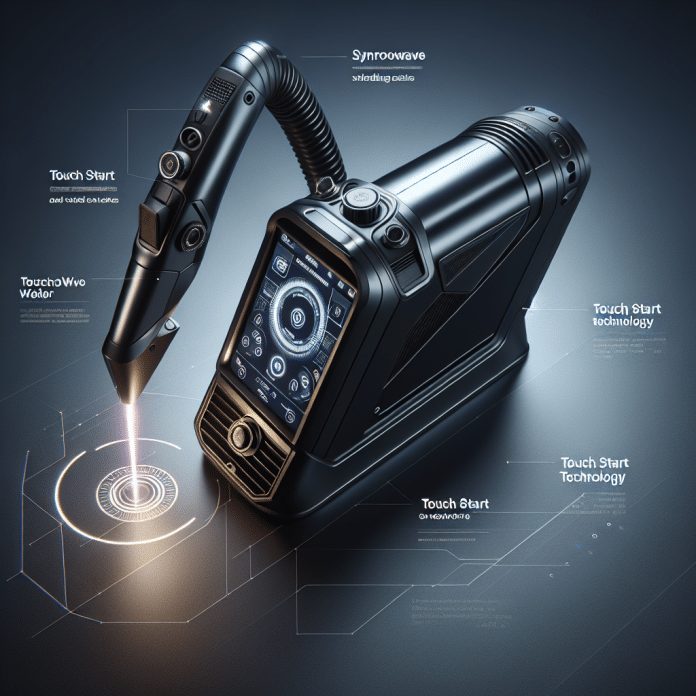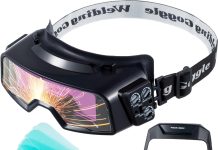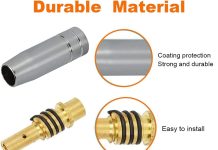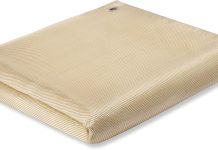If you’re in need of a reliable and user-friendly TIG welder, look no further than the Miller Syncrowave TIG Welders with Touch Start Technology. These welders are designed to make your welding experience as easy and efficient as possible. With their innovative touch start technology, you can effortlessly initiate the arc without any hassle. Say goodbye to complicated setup processes and hello to a seamless welding operation. Whether you’re a professional welder or a DIY enthusiast, the Miller Syncrowave TIG Welders are sure to be your perfect companion for all your welding needs.
Review contents
Overview of Miller Syncrowave TIG Welders
Introduction to Miller Syncrowave TIG Welders
Miller Syncrowave TIG Welders are advanced welding machines that utilize Touch Start Technology to provide easy operation and efficient welding capabilities. These welders are designed for both professional welders and hobbyists who require precise and high-quality TIG welding results.
Advantages of TIG Welding
Tungsten Inert Gas (TIG) welding offers numerous advantages compared to other welding processes. TIG welding produces clean and precise welds, making it suitable for welding thin materials, such as aluminum and stainless steel. It also provides better control over the welding process, higher quality welds, and superior aesthetics.
Features of Miller Syncrowave TIG Welders
Miller Syncrowave TIG Welders come equipped with a range of features that enhance the welding experience and ensure optimal performance. These features include Touch Start Technology, user-friendly interface, advanced welding controls, high-frequency start, adjustable AC frequency, pulse TIG capability, various arc control features, built-in gas solenoid, auto-postflow, and different product variants with specifications tailored to specific welding needs.
Understanding Touch Start Technology
Definition of Touch Start Technology
Touch Start Technology is a feature found in Miller Syncrowave TIG Welders that allows for easy and instant arc initiation without the need for high-frequency. With Touch Start Technology, welders can simply touch the tungsten electrode to the workpiece, and the arc will automatically start.
How Touch Start Technology Works
Touch Start Technology utilizes a high-sensitivity circuit in the welder that detects when the tungsten electrode makes contact with the workpiece. Upon contact, the welder quickly initiates the arc, providing instant and reliable arc starts without the risk of tungsten contamination or damage.
Benefits of Touch Start Technology in TIG Welding
The inclusion of Touch Start Technology in Miller Syncrowave TIG Welders offers several significant benefits to the operator. Firstly, it eliminates the need for high-frequency starts, reducing the risk of interference with nearby electronic devices. Secondly, it improves arc stability and control, resulting in smoother and more precise welding. Lastly, Touch Start Technology prolongs the life of the tungsten electrode, reducing the need for frequent replacements and saving time and money.
Key Features of Miller Syncrowave TIG Welders
1. Touch Start Technology
The Touch Start Technology feature enables easy and instant arc initiation by simply touching the tungsten electrode to the workpiece, eliminating the need for high-frequency starts.
2. User-Friendly Interface
Miller Syncrowave TIG Welders are designed with a user-friendly interface that allows for intuitive operation and easy adjustment of welding parameters. The clear and well-organized control panel ensures efficient and precise control over the welding process.
3. Advanced Welding Controls
These TIG welders offer advanced welding controls that provide welders with the ability to adjust parameters such as amperage, pulse frequency, AC balance, and waveform shape. These controls allow for precise customization and optimization of the welding process.
4. High-Frequency Start
In addition to Touch Start Technology, Miller Syncrowave TIG Welders also feature high-frequency start, providing the option for traditional arc initiation. This allows welders to choose the starting method that best suits their specific welding needs.
5. Adjustable AC Frequency
The AC frequency can be adjusted in Miller Syncrowave TIG Welders, allowing for the control of heat input and penetration. By adjusting the AC frequency, welders can achieve optimal results when welding different materials and thicknesses.
6. Pulse TIG Capability
Pulse TIG capability is a valuable feature found in Miller Syncrowave TIG Welders. This feature allows for precise control over heat input, reducing the risk of overheating and distortion. It also enables the welder to produce aesthetically pleasing welds with a stack-like appearance.
7. Arc Control Features
Miller Syncrowave TIG Welders offer various arc control features, such as AC balance, wave balance, and dig control. These features allow welders to fine-tune and customize the welding arc to achieve the desired results for different applications and materials.
8. Built-in Gas Solenoid
The inclusion of a built-in gas solenoid in Miller Syncrowave TIG Welders ensures efficient and reliable gas flow control. This feature eliminates the need for external gas control devices, simplifying the setup process and improving overall welding performance.
9. Auto-Postflow
Auto-Postflow is a feature that automatically adjusts the postflow gas duration based on the chosen welding settings. This ensures proper shielding of the weld and prevents oxidation, even if the welder changes parameters during the welding process.
10. Product Variants and Specifications
Miller Syncrowave TIG Welders are available in various models with different power outputs, duty cycles, and specifications. These variants ensure that welders can choose the welder that best suits their specific needs, whether it’s for light hobbyist work or heavy industrial applications.
Advantages of Touch Start Technology in Miller Syncrowave TIG Welders
1. Easy and Quick Start-Up
With Touch Start Technology, starting the arc in Miller Syncrowave TIG Welders is as simple as touching the tungsten electrode to the workpiece. This eliminates the need for complicated procedures and reduces the time required for arc initiation, allowing welders to be more productive.
2. Elimination of Contaminants
Traditional high-frequency starts can create unwanted contaminants, such as tungsten particles, that can affect the quality and integrity of the weld. Touch Start Technology eliminates the possibility of tungsten contamination, resulting in cleaner and more reliable welds.
3. Enhanced Arc Stability
Touch Start Technology ensures stable and consistent arc initiation every time. By eliminating the variability associated with high-frequency starts, welders can achieve a more stable arc, resulting in better control and improved overall welding quality.
4. Improved Arc Control
With Touch Start Technology, welders have better control over the weld pool and heat input. This enables them to produce precise and aesthetically pleasing welds, especially when working on thin or delicate materials.
5. Extended Tungsten Electrode Life
High-frequency starts put significant wear on the tungsten electrode, requiring frequent replacements. Touch Start Technology eliminates the need for high-frequency starts and extends the life of the tungsten electrode, saving both time and money.
6. Increased Productivity
Thanks to the quick and easy arc initiation provided by Touch Start Technology, welders can complete their welding tasks more efficiently. The reduced setup time and improved arc stability contribute to increased productivity and overall job completion time.
7. Reduction in Welder Fatigue
The simplified starting process offered by Touch Start Technology reduces the physical strain on the welder, minimizing fatigue during the welding operation. This allows welders to work comfortably for longer periods, improving both their performance and job satisfaction.
8. Suitable for Welding Various Materials
Touch Start Technology is suitable for welding a wide range of materials, including stainless steel, aluminum, copper, and other non-ferrous metals. Its versatility makes it an excellent choice for various industries, from automotive fabrication to artistic metalwork.
Applications of Miller Syncrowave TIG Welders with Touch Start Technology
1. Automotive Fabrication
Miller Syncrowave TIG Welders with Touch Start Technology are commonly used in automotive fabrication. The precise control and clean welds provided by these welders make them ideal for welding automotive components, such as exhaust systems, chassis, and body panels.
2. Aerospace Industry
In the aerospace industry, the reliability and quality of welding are of utmost importance. Miller Syncrowave TIG Welders equipped with Touch Start Technology uphold these standards, making them suitable for welding critical aerospace components, such as aircraft frames and engine parts.
3. Manufacturing and Repair of Stainless Steel Products
Miller Syncrowave TIG Welders are widely used in the manufacturing and repair of stainless steel products. With the ability to produce clean and high-quality welds, these welders are invaluable in industries such as food processing, pharmaceuticals, and architectural metalwork.
4. Construction and Structural Welding
The robust and versatile nature of Miller Syncrowave TIG Welders makes them well-suited for construction and structural welding applications. These welders can handle the demands of welding structural steel, reinforcing bars, and heavy-duty metals with ease and precision.
5. Artistic Metalwork and Sculptures
Miller Syncrowave TIG Welders with Touch Start Technology are popular among artists and craftsmen working with metal. The precise control and clean welding offered by these welders allow for intricate and aesthetically pleasing welds, making them ideal for creating sculptures and artistic metalwork.
Choosing the Right Miller Syncrowave TIG Welder
1. Determining the Welding Needs
Before choosing a Miller Syncrowave TIG Welder, it is important to assess the specific welding needs. Consider the type of materials to be welded, the thickness of the materials, and the intended applications. These factors will help determine the power output and other specifications required for the welder.
2. Identifying the Suitable Power Output
Miller Syncrowave TIG Welders are available in different power outputs, ranging from lower amperage models for light-duty work to higher amperage models for heavy industrial applications. Matching the power output to the welding requirements is crucial for achieving optimal results.
3. Selecting the Appropriate Model
Consider the specific features and capabilities needed for the intended welding operation. Determine if features such as pulse TIG capability, adjustable AC frequency, and advanced arc control features are necessary for the application. Choosing the appropriate model ensures that the welder meets all the required specifications.
4. Considering Additional Features and Accessories
Miller Syncrowave TIG Welders offer various additional features and accessories that can enhance the welding experience and increase productivity. These include foot pedals for amperage control, remote control options, and wireless connectivity for monitoring and data collection. Consider these options to determine if they would benefit the welding operation.
Setting Up and Operating Miller Syncrowave TIG Welders
1. Safety Precautions
Before setting up and operating a Miller Syncrowave TIG Welder, it is crucial to observe proper safety precautions. This includes wearing appropriate personal protective equipment (PPE), ensuring good ventilation in the workspace, and following electrical safety procedures.
2. Connecting Power and Ground Cables
Connect the power and ground cables to the appropriate terminals or connectors on the welder. Ensure that the connections are secure and properly insulated to prevent any electrical hazards.
3. Adjusting Welding Parameters
Using the user-friendly interface and control panel, adjust the welding parameters according to the welding requirements. This includes setting the amperage, pulse frequency, AC balance, and any other relevant parameters for the specific application.
4. Initiating Touch Start
To initiate the arc using Touch Start Technology, make contact between the tungsten electrode and the workpiece by lightly tapping or dragging the electrode across the surface. The welder will automatically detect the contact and initiate the arc.
5. Monitoring and Fine-Tuning the Welding Process
During the welding process, monitor the arc, weld pool, and overall quality of the weld. Fine-tune the welding parameters as necessary to achieve the desired results, making adjustments to amperage, pulse frequency, and other relevant settings.
6. Proper Shutdown and Maintenance
After completing the welding task, properly shut down the Miller Syncrowave TIG Welder following the manufacturer’s instructions. Clean the welder, perform any necessary maintenance tasks, and ensure that it is stored or transported correctly to prevent damage.
Common Troubleshooting Tips for Miller Syncrowave TIG Welders
1. No Arc or Poor Arc Quality
If the welder fails to produce an arc or the arc quality is poor, check the connections of the power and ground cables. Ensure that they are securely connected and not damaged. Also, verify that the settings on the control panel are properly configured.
2. Inconsistent Weld Bead or Porosity
Inconsistent weld bead appearance or porosity can be caused by insufficient gas coverage or improper shielding. Check the gas flow rate and ensure that the gas solenoid is functioning correctly. Adjust the gas flow as necessary to achieve proper shielding.
3. Uneven or Excessive Heat
Uneven or excessive heat can result from incorrect welding parameters or improper tungsten electrode preparation. Check the amperage, pulse frequency, and AC balance settings to ensure they are appropriate for the material being welded. Also, ensure that the tungsten electrode is properly sharpened and not contaminated.
4. Gas Leaks or Insufficient Shielding
If there are noticeable gas leaks or insufficient shielding, check the gas connections and the condition of the gas hose. Make sure all connections are secure and tight. Replace any damaged or worn-out parts if necessary.
5. Welder Display or Control Panel Issues
If the welder display or control panel is malfunctioning or not responding, check the power supply and ensure that the welder is properly connected to a stable electrical source. Restart the welder and perform any necessary troubleshooting steps recommended by the manufacturer.
6. Tungsten Electrode Contamination
Tungsten electrode contamination can lead to poor arc starts, instability, and reduced weld quality. Always ensure that the tungsten electrode is clean and free from any contaminants before initiating the weld. If necessary, properly clean or replace the tungsten electrode.
Maintenance and Care of Miller Syncrowave TIG Welders
1. Regular Cleaning and Inspection
Regularly clean and inspect the Miller Syncrowave TIG Welder to remove any dust, debris, or spatter. Pay close attention to the cooling system, torch, and gas components. Clean these areas thoroughly to maintain optimal performance.
2. Replacement of Consumable Parts
Periodically inspect and replace consumable parts such as tungsten electrodes, welding cups, and gas nozzles. These parts wear out over time, and replacing them ensures consistent performance and weld quality.
3. Tungsten Electrode Maintenance
Properly maintain tungsten electrodes by sharpening or replacing them as necessary. Ensure that the electrodes are clean, properly shaped, and free from defects or contamination to achieve optimal welding results.
4. Calibration and Performance Checks
Periodically calibrate and perform performance checks on the Miller Syncrowave TIG Welder. This ensures that the welder is operating within the specified parameters and maintains its accuracy and reliability.
5. Proper Storage and Transport
When the welder is not in use, store it in a clean and dry environment to prevent dust or moisture buildup. Follow the manufacturer’s recommendations for proper storage and transport to protect the welder from damage and extend its lifespan.
In conclusion, Miller Syncrowave TIG Welders with Touch Start Technology offer a range of features and benefits that make them a top choice for professional welders and enthusiasts alike. The combination of Touch Start Technology, advanced welding controls, and other key features ensures easy operation, precise control, and high-quality welds. Whether for automotive fabrication, aerospace applications, or artistic metalwork, Miller Syncrowave TIG Welders provide the reliability and performance needed to achieve outstanding welding results. By following proper setup, operation, maintenance, and troubleshooting procedures, users can maximize the capabilities of these welders and enjoy their long-lasting functionality.


























